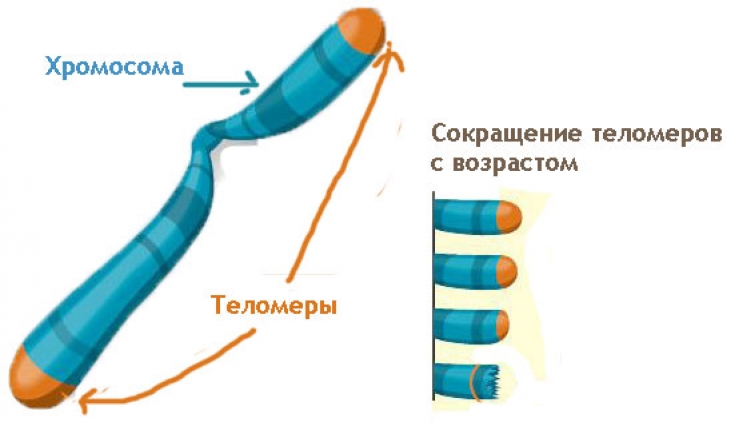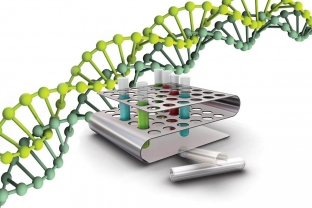The role of peptides in the functioning of the human body cannot be overestimated: these amino acid compounds perform a number of important functions.
Natural peptides are involved in the regulation of digestion, muscle contractions, they can be neuropeptides or even hormone peptides, and so on.
At the moment, peptides are also used in aesthetic medicine, for effective rejuvenation of the body. Today, estet-portal.com talks in detail about youth peptides, their effect on the body and their use in anti-aging.
Peptides of youth: why the body needs them
In the early 60s, the American scientist Leonard Hayflick discovered an amazing fact: normal somatic human cells, when cultivated in a nutrient medium outside the body, are able to divide a limited number of times.
The cells of newborns could go through as much as 80-90 divisions, while the cells of the elderly did not divide more than 20-30 times.
The maximum number of cell divisions was called the "Hayflick limit", and scientists began to study in detail the reasons for such limits.
As it turned out, it is proteins that play the most important role in this process. And the experts wondered if there are youth peptides that can slow down the aging process and remove existing restrictions. After some time, the answer to this question was successfully found.
Did you know: Peptides in cosmetology: a key role in facial rejuvenation?
Youth Peptides:
- telomeres – gradually shortening end sections of chromosomes;
- the role of the epitalon – the main peptide of youth;
- The main functions of preparations containing youth peptides.
Telomers – gradually shortening end sections of chromosomes
In 1971, Russian scientist Alexei Olovnikov suggested that the reason for the limited number of divisions of normal somatic cells that grow in vitro culture may be the gradual shortening of chromosome DNA after each doubling.
At each end of the chromosomes of somatic cells there is a multiple repetition of the TTAGGG sequence, the total length of which can reach 10 kb.
Such tandem repetitions, together with specific proteins, form telomeres – ends of chromosomes. It is these sections that are shortened during each division cycle.
The scientist also suggested that in the cells of vegetatively reproducing organisms, as well as in germ, stem and embryonic cells, there is a special biological mechanism for the restoration of telomeres, and he turned out to be right.
Interview: Ali Modarassi: We have high hopes for human stem cells.

Role of epitalon – main peptide of youth
In 1985, scientists discovered the enzyme telomerase, which has a special ability to complete the ends of linear DNA molecules of chromosomes with short repeating sequences – in vertebrates it is TTAGGG.
Thus, proliferative degradation of chromosomes, which is the main cause of aging of dividing cells, is prevented. These cells include fibroblast skin cells that synthesize elastin, collagen and hyaluronic acid.
Somewhat later, in 2001, the existence of a special protein was discovered that binds to telomeres and, as it were, closes access to them for the telomerase enzyme. It was in order to open telomerase access to telomeres that scientists of the St. Petersburg Research Institute of Bioregulation and Gerontology synthesized the youth peptide – epithalon.

The main functions of preparations containing youth peptides
Two groups of youth peptides that form when exposed to synergistic activity, form the basis of VEC
Multi-Peptide ConcentrateThe geroprotective complex is represented by regulatory peptides epithalon, vilon, thymogen, vesugen and carnosine, the main function of which is – integration of the nervous, endocrine and immune systems into a single functional continuum.
Youth Peptides are effectively used in the Dermatological Multi-Peptide Complex, and these are:
- matrixol – stimulating the production of collagen and glycosaminoglycans;
- decorinol – regulating "ripening" collagen from its precursor;
- elastinol – stimulating elastin synthesis;
- collagenol – stimulating collagen synthesis and inhibiting metalloproteinases.
Elastin protein: why does our skin need it and how to make up for its deficiency?
The use of drugs with youth peptides promotes the active work of fibroblasts, stimulates the protective properties of the skin, improves the condition of blood vessels and the functioning of the antioxidant system of the dermis and epidermis, and contributes to a general improvement in skin condition.
All this is necessarily reflected in her appearance, contributing to a pronounced rejuvenation. Thanks for staying with us. Read more interesting articles on estet-portal.com.









Add a comment